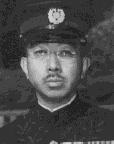
On April 29, 1901, Michinomiya, who would later become Emperor Hirohito, was the first son of Emperor Taisho (Yoshihito) and Empress Teimei (Sadako). When he was a boy, Michinomiya respectfully doubted that the Japanese emperor was a god, but was made to understand that this was a sacred myth. Michinomiya agreed that when he was emperor, he would hold the tradition, but only because it was an obligation.
When he was seven years old, Michinomiya entered the Peers’ School, where he would graduate from in 1914. Two years later, in 1916, Michinomiya becomes the crown prince. Afterwards, he would go through Crown Princes’ School, and graduated in 1921. Upon his graduation, Crown Prince Hirohito travelled to Europe for 6 months.
Once he returned in November 1921, Crown Prince Hirohito helped his father when a disease began to weaken the Emperor. After three years, he married Princess Nagako. The couple would have seven children together, being born between 1925 and 1939.
On December 25, 1926, Crown Prince Hirohito becomes Emperor Hirohito when Emperor Taisho dies. Emperor Hirohito’s reign officially began in November 10, 1928, at Kyoto, Japan.
Hirohito followed tradition and chose a name for his reign. His reign was called "Showa", or "Radiating Peace". However, he began a military buildup, which led to war in 1941 with the attack on Pearl Harbor after several attacks on China and a dream of Pacific domination.
Throughout the war, Emperor Hirohito maintained an interest in marine biology and various scientific areas. He classified marine life from the Japanese Imperial Palace, which had its own laboratory inside from which the Emperor could conduct his own works.
In September 1945, Emperor Hirohito ordered the surrender of Japan, ending the war. The only term of surrender was that Hirohito will maintain the throne. This was done since Emperor Hirohito had an estimated fortune in excess of $100 billion in a Swiss bank account, which cannot be accessed by anyone other than the Emperor in power. If Hirohito loses his throne, he would also lose his fortune. However, this doesn’t happen since the terms are agreed to. The official terms of surrender are signed aboard the USS Missouri by Hirohito and Admiral Chester Nimitz. After the war, the role of the Emperor as a god was forever lost as well.
The Emperor met with President Richard Nixon in Alaska for three months, beginning in September 1971. The rest of his life was spent in Japan, most of that time was at the Imperial Palace. Emperor Hirohito died there on January 7, 1989 of cancer. Hirohito’s 55 year old son, Akihito, inherited the throne and began the Heisei reign.
While Hirohito’s reign was marked with a massive amount of military conflict, the Emperor expressed great interest in the marine sciences. Hirohito was also the last of the Japanese emperors to be considered a god, and also one of the first modern emperors of Japan.
See a list of sources used in the making of this report
Return to the Total Warfare Main Page
Return to the Total Warfare Personalities Page